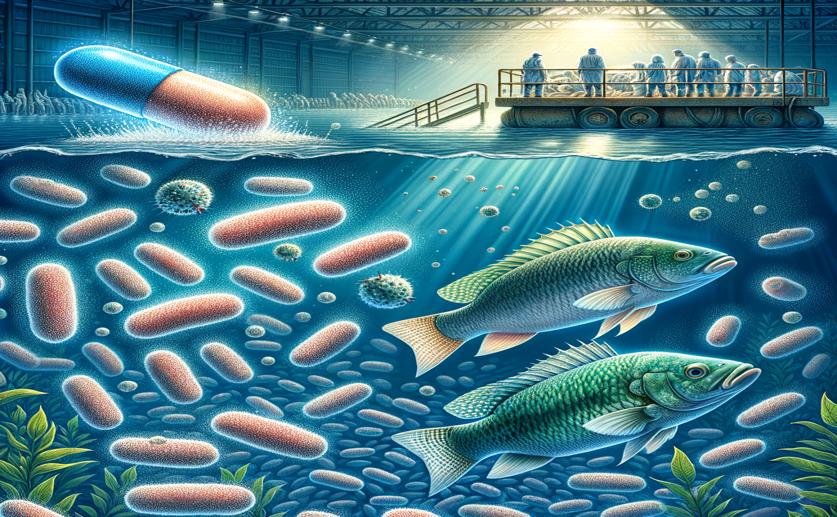
Antibiotic Resistance in Bacteria from Farmed Tilapia and Mullet Fish
Jenn Hoskins
11th March, 2024

Image Source: Natural Science News, 2024
Key Findings
- In Egypt's Suez Canal, 31.6% of tested fish carry the disease-causing bacterium A. hydrophila
- The bacterium in these fish has multiple genes enabling it to infect and resist common antibiotics
- Fish with more of these genes are more likely to die, posing risks to aquaculture and public health
References
Main Study
1) Phenotypic, molecular detection, and Antibiotic Resistance Profile (MDR and XDR) of Aeromonas hydrophila isolated from Farmed Tilapia zillii and Mugil cephalus.
Published 8th March, 2024
https://doi.org/10.1186/s12917-024-03942-y
Related Studies
2) Enterotoxin gene profile and molecular epidemiology of Aeromonas species from fish and diverse water sources.
3) Aeromonasveronii Infection in Commercial Freshwater Fish: A Potential Threat to Public Health.
4) Virulence genes contributing to Aeromonas hydrophila pathogenicity in Oreochromis niloticus.
5) Efficacy of Injectable and Immersion Polyvalent Vaccine against Streptococcal Infections in Broodstock and Offspring of Nile tilapia (Oreochromis niloticus).



 8th March, 2024 | Jenn Hoskins
8th March, 2024 | Jenn Hoskins